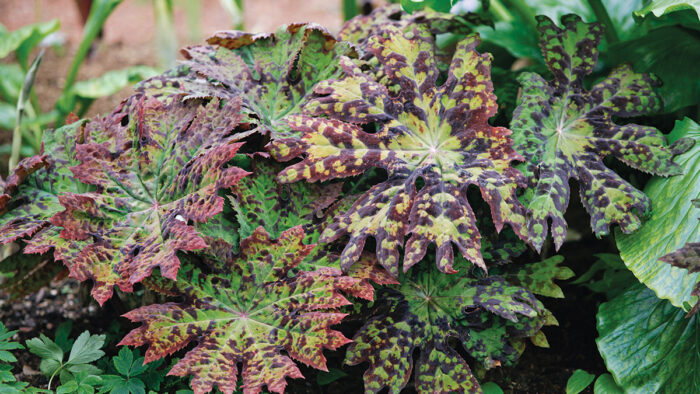
Finding plants that flourish in the shade isn’t the challenge. Anyone can find a flock of ferns or a herd of hostas to turn their shade garden into a green sea of sameness. The challenge arises when you start expecting more from those shady spots. You have to first find bold plants that thrive in partial or full shade, and then incorporate these show-stoppers in a cohesive way. It may take a little more thought and creativity to design a successful shade garden, but who ever complained about spending extra hours toiling in the cool comfort of the shade?
If it’s time to transform those dark corners of your garden, we’ve knocked the first step out of the way for you. Whether you’re a sucker for bright blooms, or unique foliage is more your style, you’ll find the perfect bold shade plant for your Northwest garden below.
1. Chinese Giant Lily
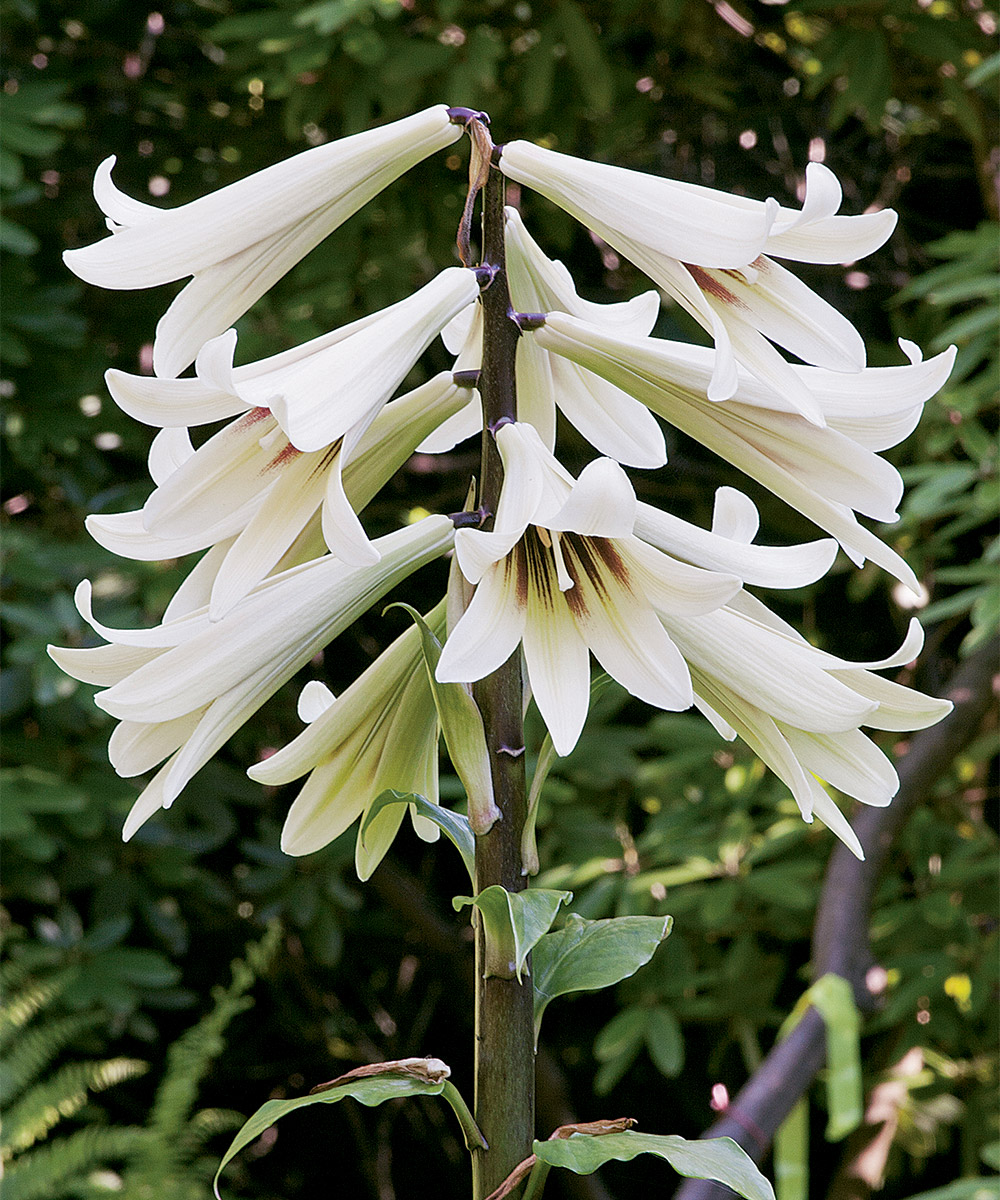
Name: Cardiocrinum giganteum
USDA Hardiness Zones: 7 to 9
Size: 2 feet tall with flower stems reaching up to 8 to 12 feet and 3 feet wide
Conditions: Prefers rich, moist soil with plenty of compost or manure in bright open shade or morning sun
“Unbelievable” is the only word I can use to describe this robust lily. In late spring to early summer, mature bulbs send up tall spires reaching 8 to 12 feet, topped with fragrant trumpet-shaped blooms. Once the flowers have faded, clusters of large seed pods replace the blooms, remaining an attractive conversation piece well into winter. This amazing lily can be grown from seed, which requires seven years of patience while waiting for the glossy green hostalike leaves to grow large enough to flower. Starting with a bulb shortens your wait to three or four years. After the plant flowers, the bulb dies, but three to five young bulbs form to flower in the future. Feed and water regularly during the growing season.
2. Jeweled Chain Fern
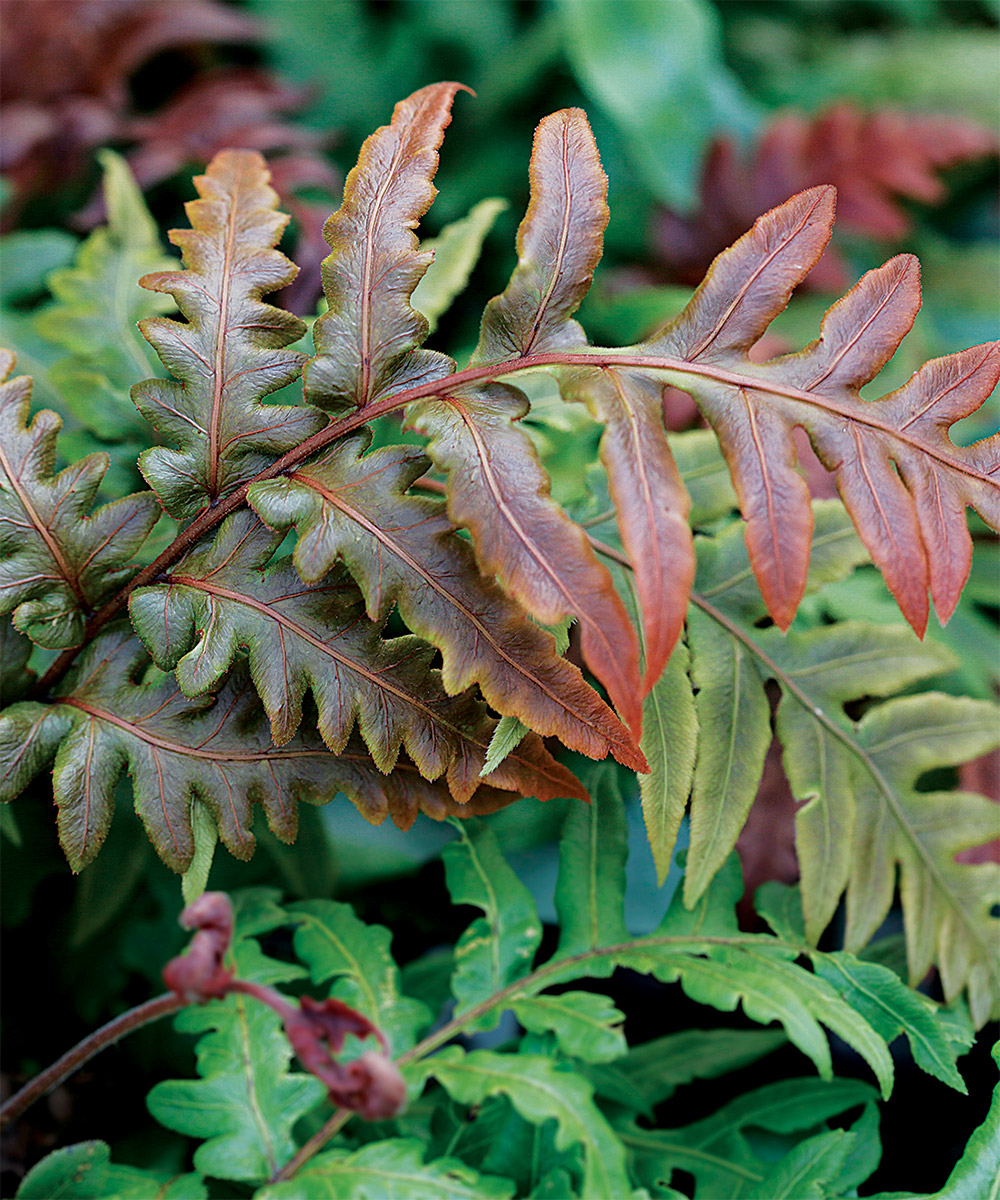
Name: Woodwardia unigemmata
Zones: 8 to 10
Size: 2 feet tall and 4 to 6 feet wide
Conditions: Best in open to bright shade; rich, moist soil and regular fertilizing
This fern inspires immediate plant lust. The large fronds can reach lengths of 4 to 6 feet and emerge a heart-stopping maroon red that slowly fades to a rich deep green. The evergreen fronds form low, broad arching mounds that allow smaller perennials and ground covers to be grown underneath. The common name comes from a single large bud that forms near the tip of mature fronds. If this bud is tucked into loose compost for the winter, a new fern sprouts in the spring.
3. Chinese Mayapple
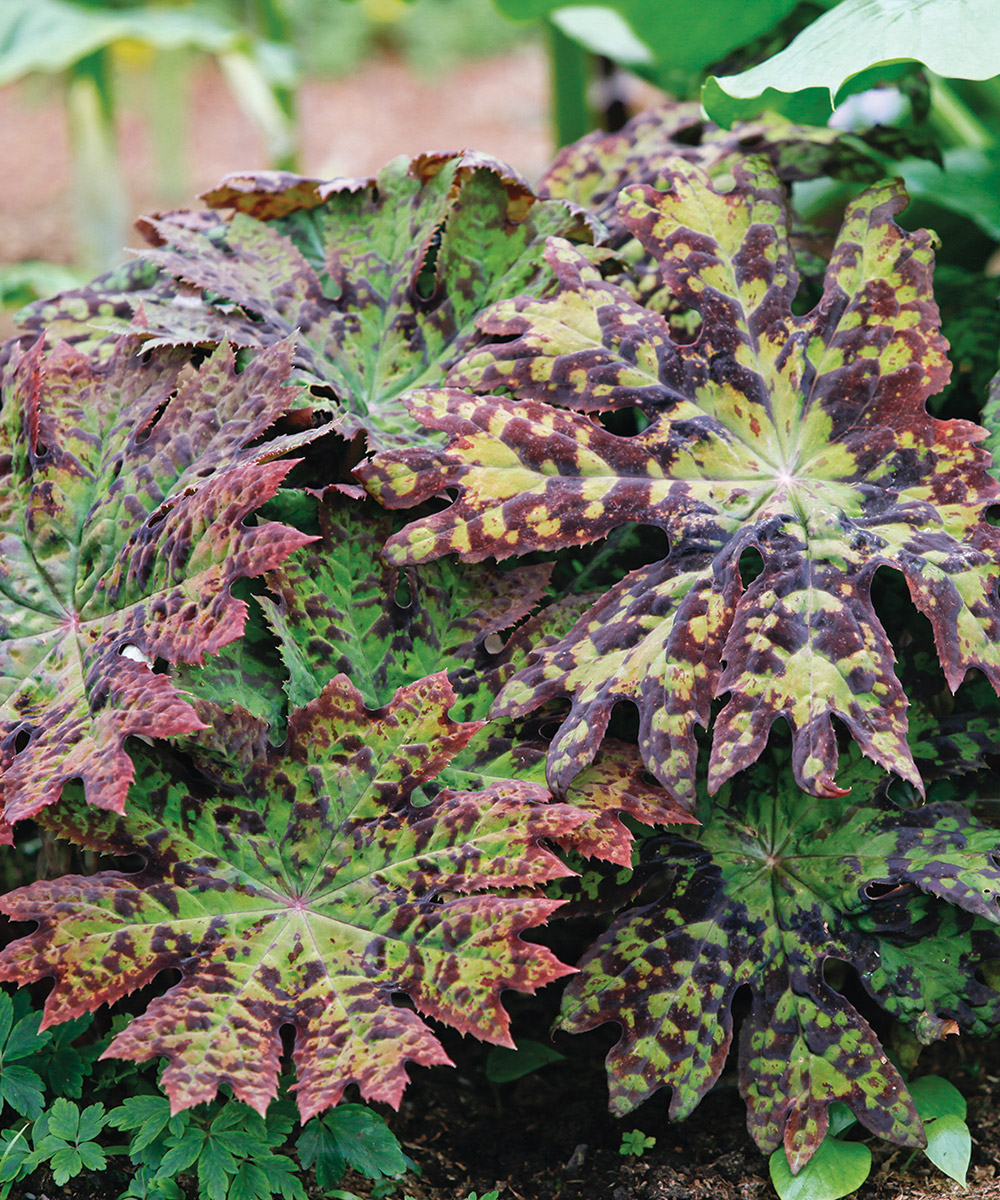
Name: Podophyllum delavayi
Zones: 6 to 9
Size: 15 to 18 inches tall and 3 to 4 feet wide
Conditions: Loves rich, moist soil and lots of organic matter
Few plants have a more stunning foliage display than Chinese mayapple. This deciduous perennial erupts from the ground with large leaves in a kaleidoscope of earthy colors. Tones of olive, maroon, chocolate brown, and apple green spot and speckle the leaf. Hidden beneath the foliage are dangling bright, blood-red flowers that, when pollinated, form apple-red, teardrop-shaped fruit. The rounded leaves are deeply cut and form a lush, eye-catching patch over time. Chinese mayapples can be heavy feeders, so fertilize regularly.
4. Chinese Epimedium
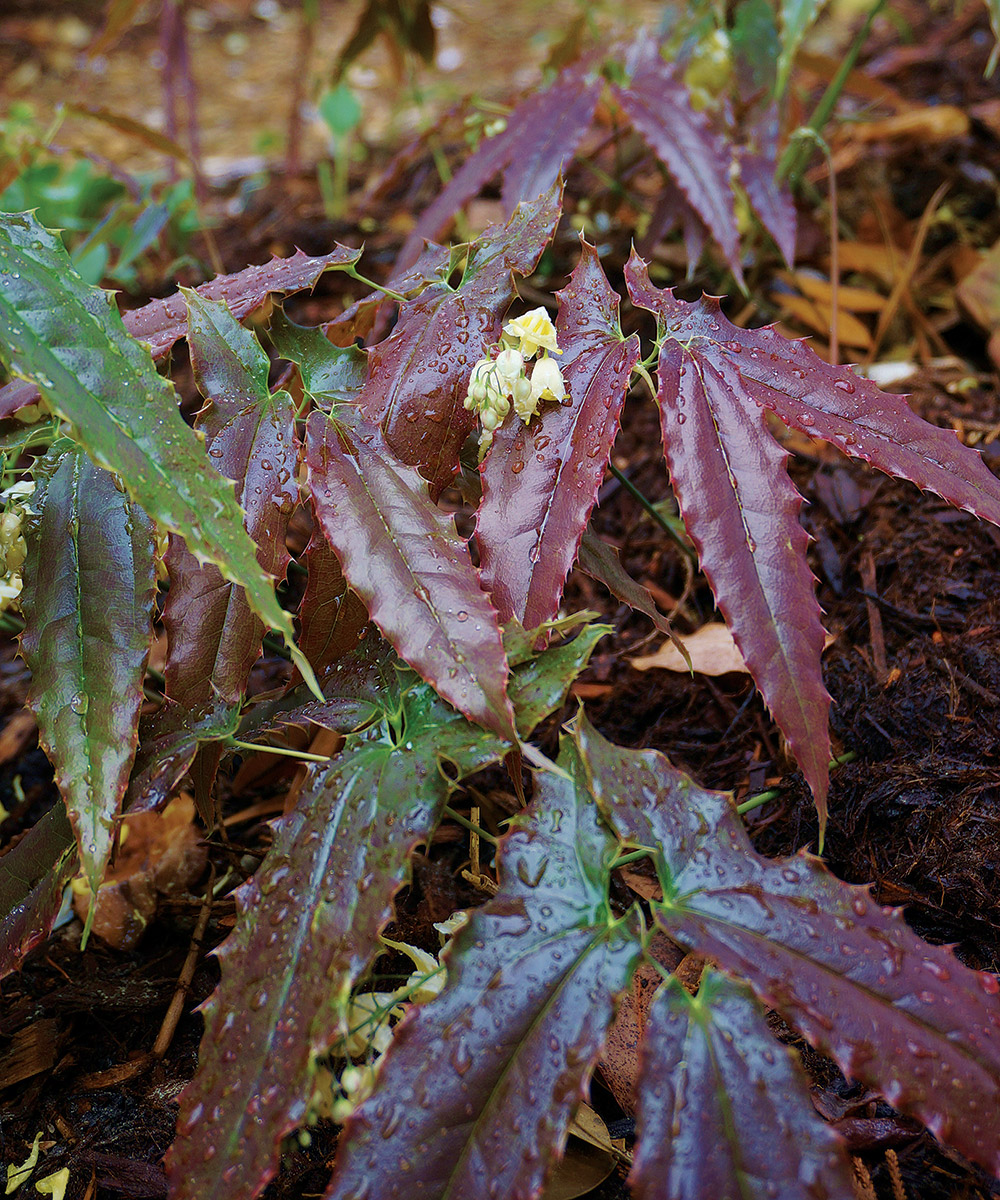
Name: Epimedium wushanense
Zones: 5 to 9
Size: 15 to 18 inches tall and 24 to 30 inches wide
Conditions: Bright shade or morning sun; rich, well-drained soil
One of the best new epimediums is Chinese epimedium. This species has large, showy, spidery, creamy yellow blooms held in dainty clusters just above amazingly bold, shiny green foliage. The intriguing leaves emerge brightly colored, from olive green with dark maroon splashes to saturated wine red. As the leaves mature, they turn dark green and develop a leathery feel with an attractive, but not painful, spiny edge. Chinese epimedium is a great long-lived clumping perennial.
Richie Steffen is curator at the Elisabeth C. Miller Botanical Garden in Seattle.


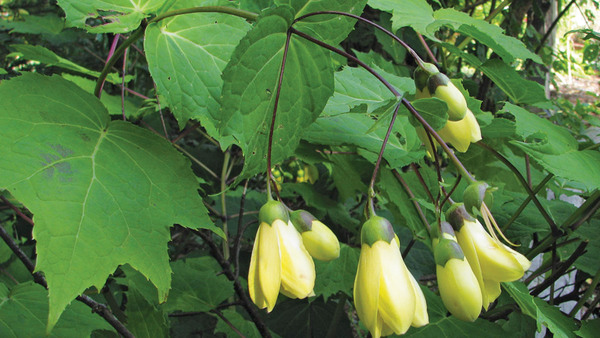
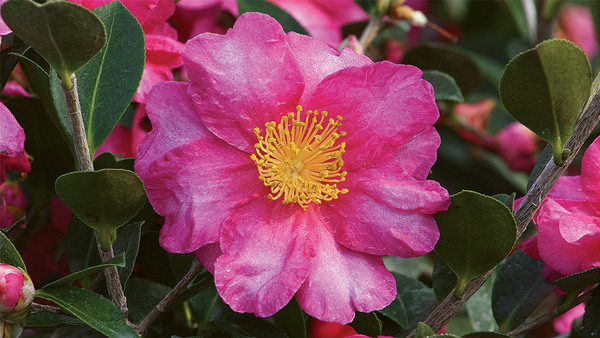
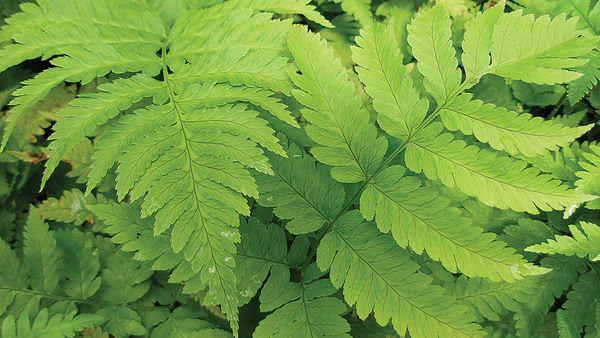













Comments
Log in or create an account to post a comment.
Sign up Log in